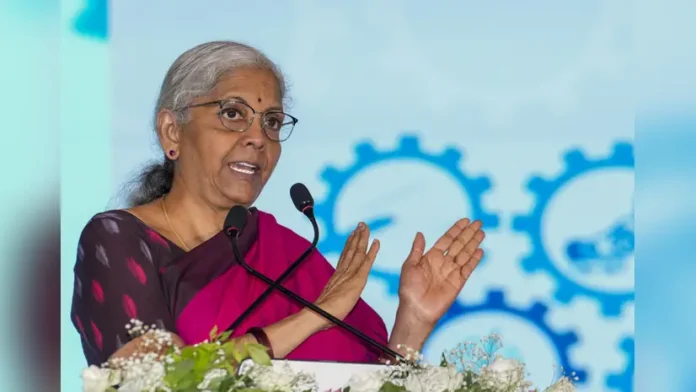Introduction
Globalisation, once considered the universal answer to economic expansion and connectivity, is now undergoing intense scrutiny as nations grapple with its uneven effects. In recent remarks, India’s Finance Minister Nirmala Sitharaman emphasized a critical yet often overlooked dimension: the need to tailor globalisation to local needs. Speaking at a policy forum, she highlighted that while the world becomes increasingly interconnected, countries like India must prioritize context-sensitive approaches to global economic integration.
This statement underlines a crucial balancing act. On one hand, India is striving to attract foreign investment and integrate further into global supply chains. On the other hand, it is also seeking to protect domestic industries, promote indigenous innovation, and support vulnerable communities. Sitharaman’s view reflects an emerging consensus in developing economies—globalisation must be inclusive, adaptable, and anchored in local realities.
The Evolution of Globalisation: A Double-Edged Sword
Globalisation refers to the growing interdependence of the world’s economies, cultures, and populations brought about by cross-border trade in goods and services, technology, and flows of investment, people, and information. It has accelerated in the last few decades, catalyzed by rapid advancements in communication and transportation technologies.
While globalisation has lifted millions out of poverty, particularly in countries like China and India, it has also led to job displacement, cultural homogenisation, and growing inequality. Sitharaman’s comments come at a time when several countries are re-evaluating their roles in a global economy shaped by supply chain disruptions, rising protectionism, and shifting geopolitical dynamics.
Sitharaman’s Key Message: Adaptability is Crucial
At the heart of Sitharaman’s statement is a call for contextualising global economic principles to meet the developmental needs of India. “Globalisation is inevitable, but it must be tempered with local aspirations,” she noted.
Her message points to a few key policy considerations:
- Protecting domestic industries from the adverse effects of unfettered imports.
- Developing skillsets in rural and semi-urban areas to ensure inclusive growth.
- Strengthening supply chain resilience with local alternatives.
- Encouraging innovation and entrepreneurship rooted in Indian socio-economic contexts.
This nuanced approach avoids rejecting globalisation outright but insists on strategic engagement—an approach that safeguards national interests while leveraging global opportunities.
Aatmanirbhar Bharat: The Indian Response
Sitharaman’s remarks align closely with the Indian government’s vision of “Aatmanirbhar Bharat” or Self-Reliant India. This initiative, launched in 2020 in response to the COVID-19 pandemic, aims to reduce dependence on foreign imports and build stronger domestic capabilities.
It emphasizes:
- Local manufacturing and innovation (e.g., PLI schemes for electronics, EVs, textiles).
- Supply chain diversification and reducing dependence on specific countries like China.
- Boosting MSMEs through incentives and credit support.
- Creating employment in rural and semi-urban areas through focused interventions.
Globalisation, in this framework, becomes a tool rather than a rule. India seeks partnerships that enhance its domestic strengths rather than simply open its markets to global forces.
Real-World Examples: Localising Global Strategies
Several sectors in India offer compelling examples of how globalisation can be reoriented to local needs.
1. Agriculture and Food Processing
Multinational companies are now investing in India’s agri-tech sector but must work with local farmers, climatic conditions, and agricultural practices. Global supply chains for organic produce and processed food are being built on Indian soil, ensuring local employment while integrating with international markets.
2. Telecom and Technology
The push for 5G and digital infrastructure involves global partnerships (e.g., Ericsson, Nokia) but also promotes homegrown innovations like Jio, BharatNet, and UPI. India’s data sovereignty policies also ensure that international tech giants comply with local laws on data storage and privacy.
3. Pharmaceuticals
India’s pharmaceutical industry is a global leader in generic drug manufacturing. However, recent policy pushes are geared toward reducing dependence on imported Active Pharmaceutical Ingredients (APIs) and investing in local research, biotechnology, and talent development.
Challenges in Balancing the Global and the Local
While the intention to localize globalisation is commendable, implementing this vision is complex and fraught with challenges.
1. Trade-offs between Protectionism and Growth
Restricting imports to protect local industries may reduce competition, increase prices, and potentially lead to inefficiencies. India must strike a balance between encouraging local players and maintaining healthy global competition.
2. Regulatory Overlaps
Implementing local content requirements, data localization laws, and compliance norms for foreign investors often creates confusion and bureaucratic delays. A transparent and simplified regulatory environment is essential for both domestic and foreign stakeholders.
3. Infrastructure Deficits
To truly benefit from globalisation, India must overcome logistical bottlenecks, such as port congestion, unreliable electricity, and poor road networks, especially in Tier 2 and Tier 3 cities. Without robust infrastructure, global investments may bypass India’s local markets.
4. Skilling and Education
Many Indian workers remain unprepared for high-tech jobs due to outdated curricula and limited access to modern training. Bridging this skills gap is essential to ensure that globalised industries benefit a wider segment of the population.
A New Global Order: Shifting Trends
FM Sitharaman’s statement must also be viewed in the context of changing global dynamics. Several global developments now favour a localisation-driven globalisation model:
- Post-COVID supply chain diversification efforts are prompting MNCs to move away from single-country dependencies.
- Geopolitical tensions (e.g., US-China, Russia-Ukraine) are pushing countries to look inward and build strategic autonomy.
- Technological decentralisation through 3D printing, digital payments, and localised logistics is making it feasible to “glocalize”—think globally but act locally.
India is uniquely positioned to become a trusted partner in this new global order, provided it aligns international collaborations with domestic capacities and social objectives.
The Role of Policy Makers and Industry
FM Sitharaman’s comments also serve as a directive to policymakers and business leaders. They must now ask not just “How do we globalise faster?” but rather “How do we globalise better?”
Policy Recommendations:
- Foster local-global partnerships, not dominance-based models.
- Design public infrastructure that connects local production hubs to global markets.
- Invest in education, R&D, and skilling to prepare the next generation for a hybrid economy.
- Encourage sustainable practices that consider environmental and social impacts.
- Promote innovation at the grassroots level, supported by global capital and mentorship.
Voices of Support and Dissent
Sitharaman’s position has found resonance with several economists, who see this as a mature evolution of India’s globalisation journey.
Dr. Raghuram Rajan, former RBI governor, once said that “globalisation without safety nets is a recipe for backlash.” Sitharaman’s stance seems to take that into account—recognising the merits of openness while prioritising fairness.
On the other hand, critics argue that such a stance may discourage foreign investors, especially if it translates into tighter FDI regulations or import restrictions. The key lies in execution, not just intent.
Conclusion: A Pragmatic Vision for India’s Global Future
FM Nirmala Sitharaman’s assertion that “globalisation must suit local needs” is not a rejection of globalisation, but a refinement. It signals a phase where India intends to engage with the world on its own terms—bringing its strengths, values, and requirements to the table.
This vision demands not only economic recalibration but also strategic policymaking, inclusive governance, and a proactive business environment. If India succeeds in aligning globalisation with local needs, it could offer a blueprint for other emerging economies navigating similar challenges.
In essence, the future of globalisation will not be about one-size-fits-all models but about custom-fit frameworks—tailored, adaptive, and equitable. And in that future, India hopes to be not just a participant, but a leader.



